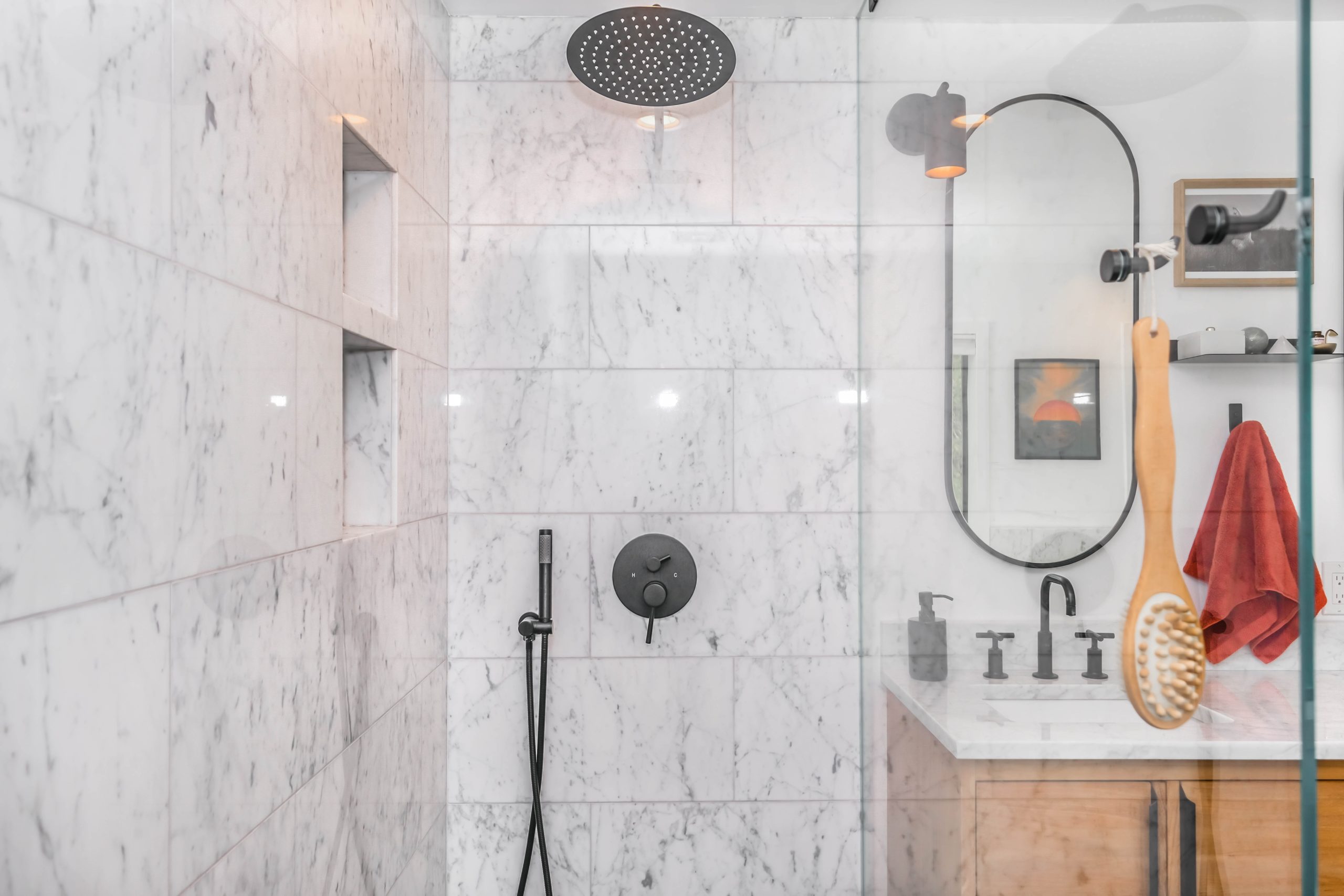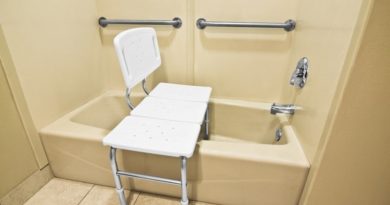How to Clean Mold in Shower Grout Naturally
**Articles may contain links that I earn compensation for if clicked and you make a purchase. As an Amazon Associate, I earn from qualifying purchases. These earnings do not actually impact the price of the product or service.
It is pretty common to notice dark spots appearing in your shower. These dark spots may be mildew or mold growth. But you do not have to worry as we researched the best methods to clean mold in the shower grout naturally.
While it is normal for your shower tiles to get infested with mold spores, these grouts make your bathroom look dirty. And it is, therefore, important to try to remove them from your bathroom.
Some chemicals may work well to clean mold in your shower. However, they may have harsh chemicals that pose a health risk. Moreover, you may feel uncomfortable inhaling these chemicals while cleaning your shower.
We have compiled some relevant ways to help you naturally clean mold in your shower grout. These natural methods will help easy mold removal in your shower grout.
Table of Contents
How to Remove Bathroom Grout
There are many natural cleaners to help you eliminate tile grout. These methods include:

Removing Mold Growth With Vinegar
One natural way to remove grout lines from the affected surfaces is to spray with an undiluted vinegar solution. Vinegar solution has an acidic concentration that keeps your bathroom clean and mold-free.
There are no special steps here, just fill a bottle with distilled vinegar the same way you’d use it in your kitchen. Once you have a filled bottle, you can start cleaning.
You will need to apply your undiluted vinegar to your shower tiles. Next, you can use a damp cloth to spread the vinegar solution on the entire surface. It would help if you sprayed the vinegar directly on your tiles to get better coverage.
Although vinegar has a strong smell, it disappears after drying. Moreover, the pungent odor from the vinegar solution does not pose any serious health risk. However, you can add a few drops of your preferred essential oils to your spray bottle to eliminate the odor.
Note that you must allow the vinegar to dry for at least an hour. During this period, the vinegar penetrates the mold growth and kills bacteria. Hence, you find it easier to remove mold after the penetration.
You’ll require a damp sponge to clean mold from your bathroom tiles. Wet the sponge or cloth with warm water and wipe the surface back and forth.
The mold should quickly leave your grout. You can continue cleaning the entire surface until you don’t see any more grout lines.
If your shower uses the removable shower head technology, you can use that in place of the spray bottle. The shower head also helps to remove mold from grout. For stubborn mold, you may have to use a soft bristle brush to facilitate the removal.
If you do not have a bristled brush, you can use an old toothbrush that serves the same purpose. Try to scrape the remaining mold by applying pressure on the affected area.
While brushing, try to scrub off as much mold as possible. You may need to apply more warm water or vinegar to help you remove the mold.
After removing mold in shower grout, you must spray your bathroom with vinegar. The vinegar will prevent mold from growing in your bathroom.
Ensure to spray everywhere, including your bathroom window, shower curtain, and other parts of your bathroom. You can apply vinegar every time you shower as an excellent preventive measure.
Remove Mold Using Baking Soda
Baking soda is another effective way to remove mold from shower grout naturally. You will need to make your baking soda paste by mixing the water and baking soda. Add two cups of water to a bowl containing one tablespoon of baking soda.
Stir the mixture until the baking soda completely dissolves in the water to form a paste. You can add 20 drops of orange essential oils or lemon orange for improved smell and extra cleaning power.
While baking soda helps remove mold, it has an abrasive cleaning action. Therefore, combine the baking soda with another cleaning agent like vinegar instead of water.
The vinegar makes the baking soda fizz. Hence, the solution loosens up stubborn mold.
With a soft bristle brush, spread the paste onto the tile grout and scrub gently. The baking soda breaks the mold and eliminates the musty odor in your shower. You can continue cleaning your shower tiles until the moldy grout disappears.
You can use a stiff bristle brush if the soft brush does not work well. Also, you can use an old toothbrush to help you get to tight spaces. You can also use a wet towel to wipe off the thick baking soda paste in your shower grout.
Using Hydrogen Peroxide
 Hydrogen peroxide helps decolorize or lighten materials. Hence, you can use the chemical to check if your shower tiles change color after application.
Hydrogen peroxide helps decolorize or lighten materials. Hence, you can use the chemical to check if your shower tiles change color after application.
You will need to wait a day after applying the hydrogen peroxide to see if the chemical discolors the tiles. You can use hydrogen peroxide if your tiles maintain their color. However, if you observe a color change, you must use another cleaning solution.
Ensure to use a 3% hydrogen peroxide cleaning solution. It would help if you used this concentration because it helps kill mold.
If you do not have the hydrogen peroxide in a spray bottle, you may need to pour some for convenience. Ensure to evenly coat your shower grout and tiles with hydrogen peroxide to ensure an even mold removal from your shower walls.
It would help if you allowed the chemical to stay on the shower grout for about ten to fifteen minutes. Hydrogen peroxide takes time to act. Hence, the time allows the product to remove colored grout.
Unlike other natural cleaning agents, hydrogen peroxide removes porous grout and different visible mold with efficiency.
You can use a stiff bristle toothbrush while scrubbing grout to get more access to tight areas. If you have challenges removing mold due to its porous nature, you can add a thick paste of baking soda.
You will need to use another sponge or rag to remove mold spores from your tiles. For more efficiency, ensure to wet your rag or sponge under warm water before cleaning your tiles.
You need to keep your hydrogen peroxide away from sunlight at all times. Sunlight tends to make the chemical less effective.
Hence, you must store the product in an opaque bottle. It will help keep the chemical in the dark cabinet if you do not have an opaque bottle.
Essential Oils
You can make your essential oil by mixing citrus seed oil or tea tree in a water bottle. Citrus seed oil and tea tree oil work well to remove most mold you will find.
Furthermore, you can use these oils to aid disease control and prevent mold growth. The oils also work well in killing mold that grow in other places like laundry rooms.
Mix two teaspoons of oil with two cups of water to prepare your essential oils. It would help if you combined this solution in a spray bottle to ensure thorough mixing. A tip is that tea tree oil has a powerful odor while citrus seed extract does not.
Furthermore, essential oils can cause a runny nose and irritation in the eyes. Mixing your solution under a ventilation fan to promote air circulation would be best. Also, always use safety glasses and rubber gloves when using these oils.
After preparation, you can directly spray the solution on the mold you notice in your shower. It would be best always to cover the mold in oils for more effective results. Next, you need to allow the solution to dry completely.
The oils submerge and kill mold in shower grouts. Also, the oils prevent mold and bacteria from growing after killing them. These oils are so effective that they attack mold spores and bacteria down to the roots.
After cleaning the tiles, you need to remove the excess mold using a clean, damp rag rinsed in warm water.
Taking Safety Precautions
 You can practice safety precautions instead of waiting for mold to colonize your shower grout. Such precautions prevent mold from growing in your shower in the first place.
You can practice safety precautions instead of waiting for mold to colonize your shower grout. Such precautions prevent mold from growing in your shower in the first place.
Mold thrives in moist environments. Hence, it would always help to keep your shower ventilated. Furthermore, you can clean away soap scum which also increases mold growth.
Other safety precautions include wearing goggles and gloves to prevent irritation. In addition, you can use a mask to protect your face from harmful substances such as mold.
It will help to use these goggles if you have a mold allergy. These allergies include runny or stuffy noses, sneezing, and itchy eyes. You could also experience shortness of breath and a scratchy throat.
It does not matter whether you see black mold or other types of mold; it is always better to take the safety-first approach.
Conclusion
We discussed how to clean mold in shower grout naturally in our article. You could use several natural mold cleaning solutions in your quest for mold remediation. Several natural cleaning agents like white vinegar and chlorine bleach work to remove mold from surfaces.
One good thing with these solutions is that you can use them even for carpet cleaning. In addition, you can use chlorine bleach, hydrogen peroxide, essential oils, and other mold remediation chemicals to kill mold.
While trying to rid your shower grout of mold, you must take some safety precautions. Always ensure to wear gloves and glasses to avoid irritation from mold spores. In addition, it would always help to ventilate your shower grout to prevent moist environments.


